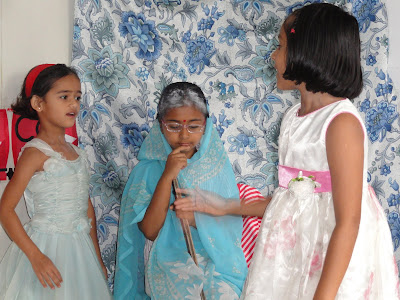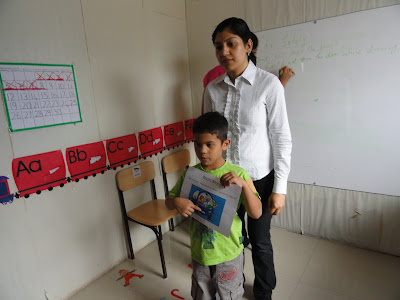What does this entail? Let us question our self what we have done to the environment, how much damage is caused to animal habitat.
Its also a time to rediscover the wonders of the wild and work toward the protection of this wealth.
Do we miss the house sparrow which was a rather common sight is hardly spotted these days. If this is the fate of a species that co-existed with humans, imagine the ones that need their own habitat.
The Importance of Wildlife and the Diversity of Life
Biological diversity is critical to human welfare
What is the diversity of life? Biological diversity, or "bio diversity" for short, refers to the vast variety of wild plants, animals, fungi and microrganisms that live on our planet. Unfortunately, because we lack the vast resources that would be required to exhaustively survey every nook and cranny on the globe, scientists don't know exactly how many species exist beyond the 1.5 million already named and described. Most estimates of the number of species range anywhere between 5 to 30 million.
We also cannot say precisely how quickly we're losing bio diversity. The rate of species extinction most often given by scientists is about 1,000 times the "background rate" of extinctions that would occur without human influence. We do know that both human health and the well-being of our planet depend on bio diversity, and so a shrinking bio diversity has the potential for severe consequences.
Why biological diversity matters
Bio diversity can -- and should -- be thought of as more than a number. It's a pharmacy that provides us with essential medicines, and a supermarket that is the ultimate source of all our food stocks. It's also a library that inspires and informs designers and engineers, and a source of recreation for millions of people who fish, hunt, bird-watch or enjoy nature in other ways.
More than 40,000 species of plants, animals, fungi and microscopic animals are used in some way to benefit humans, according to a study by the American Association for the Advancement of Science. More than a third of our pharmaceuticals originated with wild plants, from common drugs like aspirin to life-saving medicines like Vincristin, which has greatly reduced childhood leukemia deaths. With most wild species not yet tested, more medicinal discoveries await us.
The use of wild plant stocks for human food sources is a subject of ongoing agricultural research. As well as developing new food products for expanding human populations, agricultural scientists turn to wild plants for resistant strains when disease strikes our crops.
Benefits: from household products to technological innovation
Industry also benefits from wild plants and animals. We use glues, lubricants, solvents and perfumes made manufactured from chemicals that originated in nature. Engineers also turn to life forms for inspiration: the Navy funded a study and prototype for a submarine that is modeled on fish movement, and the brain circuits of tiny worms known as nematodes was the model for an electronic robot the Navy developed to detect land mines at sea.
Another crucial component of bio diversity is what scientists call "ecosystem services." Forested watersheds provide clean drinking water. Wetlands filter pollutants, offering a natural water purification service. Trees also reduce pollutants, improving air quality. In a process known as nitrogen fixation, microrganisms that live only on certain plants convert atmospheric nitrogen into the form that is essential for the growth of all living plants and animals.
Other benefits of bio diversity can't be measured in dollars or otherwise quantified. Biological diversity enriches our lives by making the world an immeasurably more beautiful and interesting place to live. When plants and animals vanish, we lose something irreplaceable.
Why are we losing bio diversity?
The major cause of species loss in the U.S. and worldwide is the loss and degradation of habitat. As forests, wetlands, prairies, coastal estuaries and other habitats are converted to residential, commercial or agricultural use and other types of development, wild plants and animals vanish. In addition, many areas known as "hotspots" for their unusually rich bio diversity, such as Florida and Southern California, also have rapidly expanding human populations, which accelerates the loss of bio diversity.
In the U.S. non-native species are the second largest cause of species loss. Hundreds of Hawaii's unique wildlife and plants are being driven to extinction by non-native plants and animals. Other factors are pollution, disease, over-fishing and over-hunting.
The renowned scientist and Harvard Professor E.O. Wilson has studied and written about bio diversity for decades. He tells us: "The worst thing that can happen will happen is not energy depletion, economic collapse, limited nuclear war, or conquest by a totalitarian government. As terrible as these catastrophes will be for us, they can be repaired within a few generations. The one process ongoing . . . that will take millions of years to correct is the loss of genetic and species diversity by the destruction of natural habitats. This is the folly our descendants are least likely to forgive us."
Why is wildlife conservation needed?
Everything thing on the planet is interconnected .All of us know that we are connected to the wildlife through a cycle called food cycle and if one of the member in this cycle is affected the other will also be affected. Human for his benefit had started interfering with the environment which is not correct.Our ancestors also used to hunt animals but they used to take care of one thing whether it is a young animal or an old if it was old then only they used to hunt him. They never hunted a young animal because they knew that would one day lead to the extinction of that animal.We always think about ourselves which is our nature and if we interlink all the points we will find that danger to wildlife is danger to human being himself. If we want to save future generation then we should and must look after the wildlife and conserve it.
If you want to help save rainforest then don't eat fast food / buy cheap foreign beef. The rainforest is being destroyed in South America to make way for grazing to produce cheap beef. Check the products you buy to see if they contain plam oil (the forests are being cut down in places like Borneo to make way for this, endangering the orangutans who may be gone in 5 years). Make sure you buy paper, cards, etc that carry the FSC mark so you know they are from sustainable sources. Don't buy furniture made of mahogony or teek.
try and avoid pollution and try not to buy furniture made of mahagony and teek as they make up most of forests. The government should not let polluting industries and factories to be put up near forests. WE SHOULD GROW PLANTS AND TREES to prevent the decrease of forests. to help save wildlife people should not be allowed to kill other animals and as we know the government is taking measures to stop this by building national parks and wildlife sancturies where cutting downof trees and poaching
What is the most valuable species to conserve?
This is a tricky question. There is no one thing to conserve, there are many! Different environmental groups will have their own opinions on what to conserve, such as rare or endangered birds, flowers or habitats. For example, habitats are ecosystems, a woodland is a habitat that supports birds and flowers, so if there is no woodland the other two cannot exist. So this may be the most important one to conserve, but if no birds are present seeds cannot be dispersed and flowers pollinated - all these factors may affect species at different levels as part of the dynamics of a ecosystem. Most conflicts of interest can be resolved by identifying the priorities of an area or species.Another reason is the extinction of one species leads to the endangerment of dependent species, example the Dodo in Madagascar, the disappearence of which leads to the subsequent extinction of Calvari tree species as it is dependent on these birds to germinate its seeds.”Thus with the extinction of one species after the other, the ecological balance will be upset leading to calamities like earthquakes, and other environmental problems.
Why do we need trees?
∙ To provide a vital habitat for wildlife: A native hedge plays in the survival of butterflies,moths,dormice,hedgehogs, birds,insects and bats.
..Tree and shrubs can be educational:
..To suppress noise pollution.
..To stabilise soil, where trees have been felled on steep banks soil erodes and with the absence of trees causes whole banks of soil to wash away.Trees can also protect soil from hot weather,preventing it to dry out too quickly
..To act as a windbreak,shelter belt and visual screen
Come join together and lets time to rediscover the wonders of the wild and work toward the protection of this wealth.
Compiled By M2 (Margaret & Meena)
 How many children find themselves in a unique position where they can watch their school building being built, brick by brick, right in front of their eyes? Not many!! But we do have one such privileged bunch of kids at Sancta Maria.
How many children find themselves in a unique position where they can watch their school building being built, brick by brick, right in front of their eyes? Not many!! But we do have one such privileged bunch of kids at Sancta Maria. 




 Margaret & Meena
Margaret & Meena










 Human Pyramid in the making
Human Pyramid in the making








